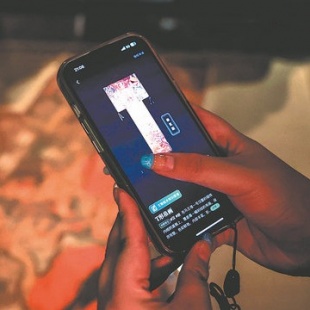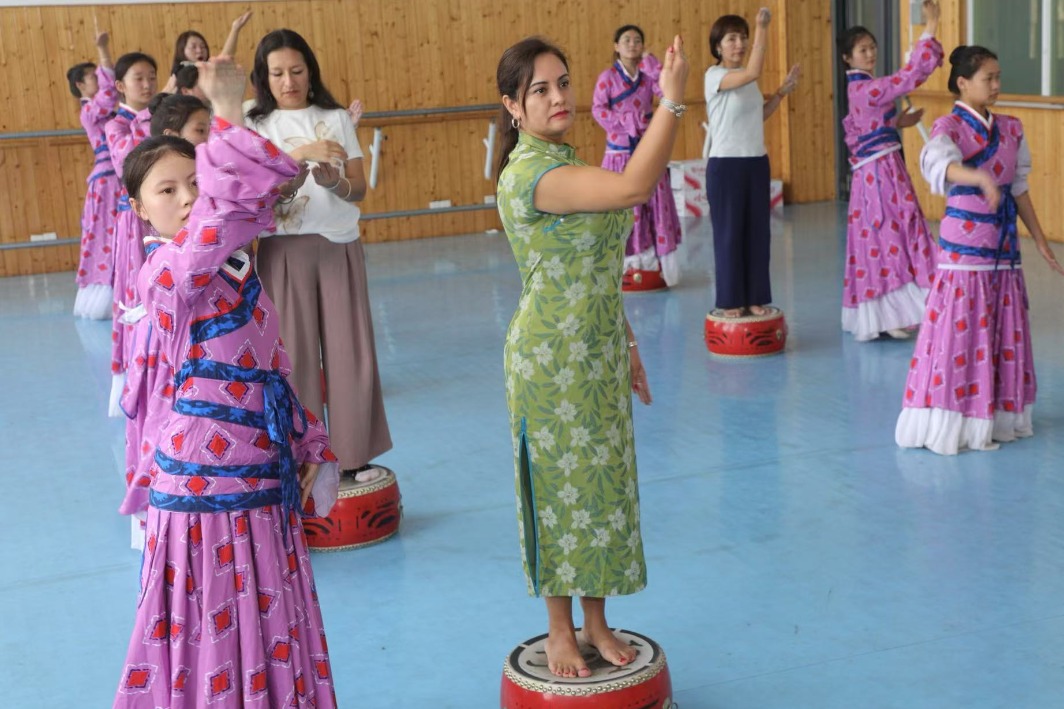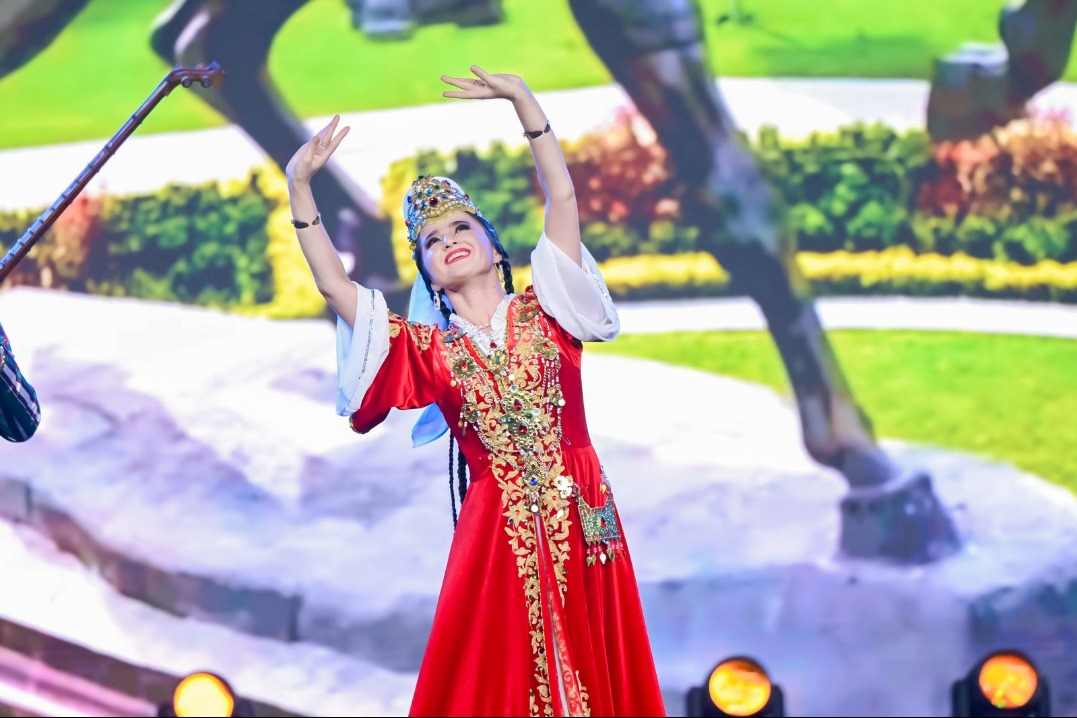App offers detailed views of museum exhibits
The past is on greater display as tech widens public access, Xing Wen reports.


The appeal of museums has not just been confined to history as many institutions offer tantalizing glimpses into the past for recent visitors, particularly during the summer break when students are keen to explore artifacts up close.
Museums have become must-visit destinations, with tickets often difficult to obtain.
Take, for instance, the Shaanxi History Museum in Xi'an, Shaanxi province, where daily ticket reservations exceed 600,000 clicks, yet only 12,000 fortunate visitors manage to secure entry.
However, the recently launched app, Shanhai Museum (literally "mountain and sea"), serves as a digital portal to thousands of artifacts from prestigious museums, providing an alternative for those unable to obtain tickets.
The app is available on both Android and iOS devices. Overseas users can search for "ShanHai Museum" directly in the app store to download it. With the app, users can zoom in on 3D images of exhibits to observe details, access information about the artifacts and even use artificial intelligence to create paintings, virtual art pieces and other derivative works at their fingertips.
Currently, its digital artifact repository includes exhibits from institutions, such as the Shaanxi History Museum, Hunan Museum, Gansu Provincial Museum, Gansu Jiandu Museum and the Hunan Museum of Geology.
The app's launch ceremony took place in Changsha, Hunan province, on Monday, after which a forum was held themed on the application of digitalized tools in the promotion and protection of cultural heritage.
At the event, a livestream linkup showed the platform's digital artifact acquisition team capturing images and creating 3D models of a bronze dragon head in Shanghai. The digital version was then transmitted onto a big screen at the event site in Changsha. This entire process was completed in just 13 minutes and 14 seconds.
"In such a short time, they collected a precise set of data. I'm impressed," says Hou Ningbin, curator of the Shaanxi History Museum.
With nearly four decades of work experience in the field of cultural heritage protection, he recalls that as early as the 1990s, the Shaanxi History Museum began applying digital technology in the protection of cultural relics.
Back then, electronic tags were attached to the cultural relics and radio frequency technology was used to record the positioning and tracking of the outbound cultural relics.
"In the early 2000s, when we were collecting 3D data from some cultural relics, we faced two main challenges: high costs and low efficiency," he says.
"The financial outlay was high but it would take several weeks to collect data for a single artifact. However, the technical team behind the Shanhai Museum app has already solved these two issues."
The technical team developed an algorithm that cuts the time needed to create a digital version of each artifact by 90 percent compared to traditional methods.
Even when the digitalized artifact is enlarged six to eight times, every detail remains clear, according to Fang Fei, chief manager of the Hunan Mango Digital Art Intelligence Technology company, which developed the app.
"In the future, we plan to carry out 3D modeling and data cataloging of hundreds of thousands of cultural relics in museums nationwide," he notes. "And we have collaborated with universities, archaeological institutes and digital libraries to acquire historical documents, inscriptions, archaeological logs and research papers related to cultural relics."
Based on the huge database, the app offers users a knowledge graph that links a certain cultural relic to historical figures and related stories. A knowledge graph represents a network of real-world entities — objects, events, situations or concepts — and illustrates the relationships.
Zhang Boshuo, 19, a Beijing university student and avid museum visitor, notes that at exhibitions, one would follow a specific logic or narrative to experience the displayed relics.
The knowledge graph offers a more expansive way of linking relevant information, enabling the thorough comprehension of the narratives woven around the artifacts, he adds.
Peng Minghan, curator of the Nanchang Relic Museum for Haihun Principality of Han Dynasty, notes that in recent decades, cultural institutions have digitalized relics but many of them operate independently.
"That requires users to visit multiple sites searching for information. The Shanhai Museum app's emergence promises integrated resources from various institutions for easier access," he adds.

Meanwhile, the international version of the app is now accessible in six languages, including English, French, Spanish and Japanese.
Hou says that this development underscores the app's commitment to promoting Chinese culture on a global scale.
"Translating the historical context and essence of the artifacts into other languages with high precision within a global framework poses a great challenge. This is something that the Shanhai Museum platform must address in the future," Hou says.
Discussing cross-cultural communication on cultural relics, Jay Xu, the director of the Asian Art Museum of San Francisco in the United States, highlights the importance of understanding the needs, perspectives and familiarity with Chinese culture among audiences in a specific region.
"Storytelling must closely resonate with the interests of the local populace. We can guide them into the unfamiliar and magical world of Chinese culture through concepts and contexts they are familiar with," says Xu, who was invited as a guest to the event.
Established in 1966, the Asian Art Museum of San Francisco boasts the largest and most diverse collection of Asian art outside of Asia. With more than 15,000 art treasures from countries such as China, Japan, South Korea and Indonesia, the museum has long served as a gateway for visitors to explore and understand the past, present and future of Asian cultures.
The Shanhai Museum platform has created an online community for cultural enthusiasts to interact and has gathered scholars, artists and content creators to consistently produce high-quality educational content on cultural heritage.





































